My country Nepal
Nepal is located in the Tropic of Cancer (Northern Hemisphere) and lies between China in the north and India in the south, east and west. It has an area of 147,181 sq. km including water which has an area of 3,830 sq. km and its geographical coordinates are 28°00′N 84°00′E.
Nepal is typically characterized by a rugged topography due to the amount of hills and mountains within its area. Nepal is a country of highly diverse and rich geography, culture, and religions. The mountainous north has eight of the world's ten highest mountains, including the highest, Sagarmatha, known in English as Mount Everest. The fertile and humid south is heavily urbanized. It contains over 240 peaks more than 20,000 ft. (6,096 m) above sea.
There are lots of factor due to which we are recognized as Nepalese.Some of the factors which have shaped our identity as Nepalese people are national Language,Kingship of Nepal cultural, social, and religious factors.
National Language
Nepal is a beautiful country decorated with different colours of various languages. Nepal is divided into 14 zones and 75 districts, grouped into 5 development regions.
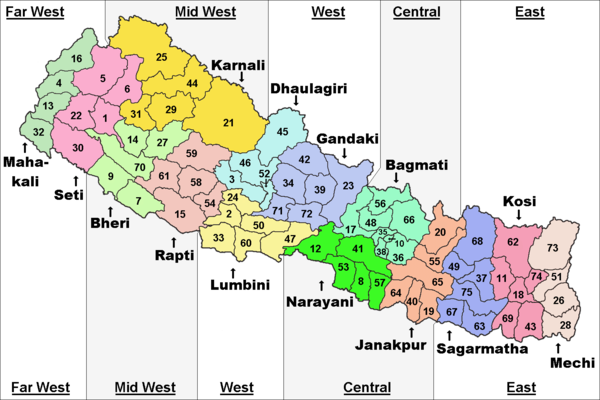
We can find various people of different castes and culture living together here in Nepal who speak different languages from Mechi to Mahakali. There are more than 200 languages being spoken in Nepal and every community have its own mother tongue like Newari,Tamang,Maithili, Tharu etc. Whatever the language the people may speak, the principal, national and official language of Nepal is Nepali as we can express our thoughts and feelings through this language with the other people in the community. It is also considered as the local languages because the local people of different communities communicate with each other in Nepali.Therefore all the governmental and official documents are presented in Nepali language. Nepali language has become one of our identities and It has helped many people to come closer and develop understanding among them. Language is like a thread and people are like flowers .So just as thread keeps the flowers together, language lings the people with one another.
Culture and Tradition
The culture of Nepal is rich and unique. The cultural heritage of Nepal has evolved over the centuries. This multi-dimensional heritage encompasses the diversities of Nepal's ethnic, tribal, and social groups, and it manifests in music and dance; art and craft; folklore and folktales; languages and literature; philosophy and religion; festivals and celebration; foods and drinks. Its culture is mostly influenced by Indian, Mongolian and Tibetan culture.There are various origins and fields of tradition; they can refer to: the forms of artistic heritage of a particular culture beliefs or customs instituted and maintained by societies and governments, such as national anthems and national holidays and others. Our lifestyle is shaped by our cultures and traditions.
Nepal has two main religions, Hinduism and Buddhism, although many Nepalese practice a unique combination of both mixed with a degree of animism. The traditions of both go back over two millennia to the birth of the Buddha in Lumbini and the ancient Hindu rituals still strong today. Also treasured is the tradition of excellence in arts and crafts.
Hinduism is a religion, or a way of life, widely practiced in South Asia. Hinduism has been called the oldest religion in the world, and some practitioners and scholars refer to it as Sanātana Dharma, "the eternal tradition," or the "eternal way," beyond human history.
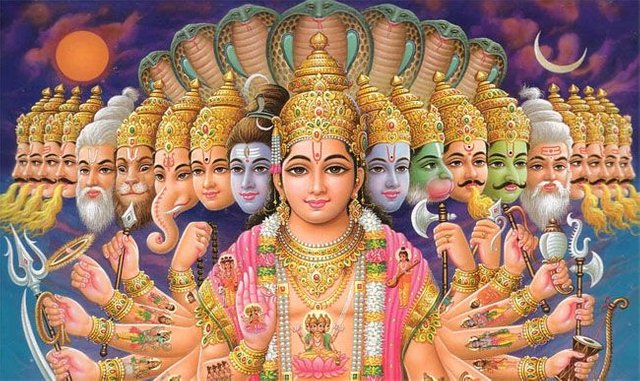
Buddhism is a religion and dharma that encompasses a variety of traditions, beliefs and spiritual practices largely based on teachings attributed to the Buddha. Buddhism is based on the teachings of a Nepali prince born in Nepal named Siddharta Gautama who lived around 500 BCE.Buddhism originated in Ancient India sometime between the 6th and 4th centuries BCE, from where it spread through much of Asia, whereafter it declined in India during the Middle Ages. Two major extant branches of Buddhism are generally recognized by scholars: Theravada (Pali: "The School of the Elders") and Mahayana (Sanskrit: "The Great Vehicle"). Buddhism is the world's fourth-largest religion, with over 520 million followers or over 7% of the global population, known as Buddhists.
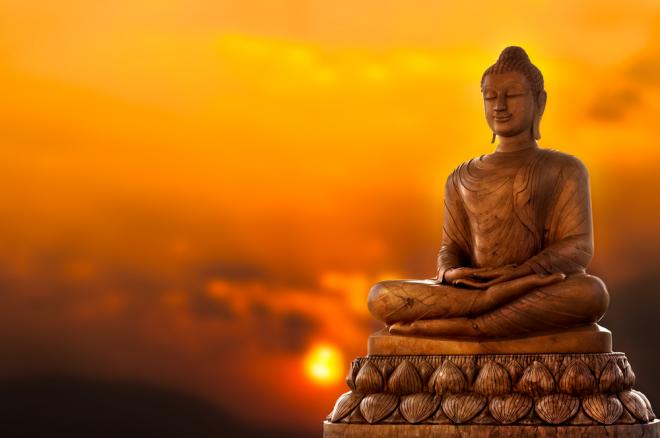
NATIONAL SYMBOLS
1.National Flag-Our National flag consists of two triangular figures with a crimson color base and deep blue boarders. A white moon is imprinted in upper part and the white sun if imprinted in the lower part. The sun and moon in the flag indicates that as long as there is sun and moon in the sky Nepal will exist.
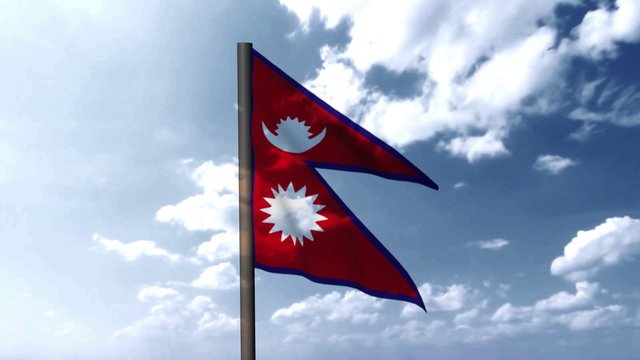
2.National Flower- The rhododendron (Laliguras) is our national flower. Rhododendron is also a source of medicine and people usually keep the flower in the hair to make themselves look attractive.
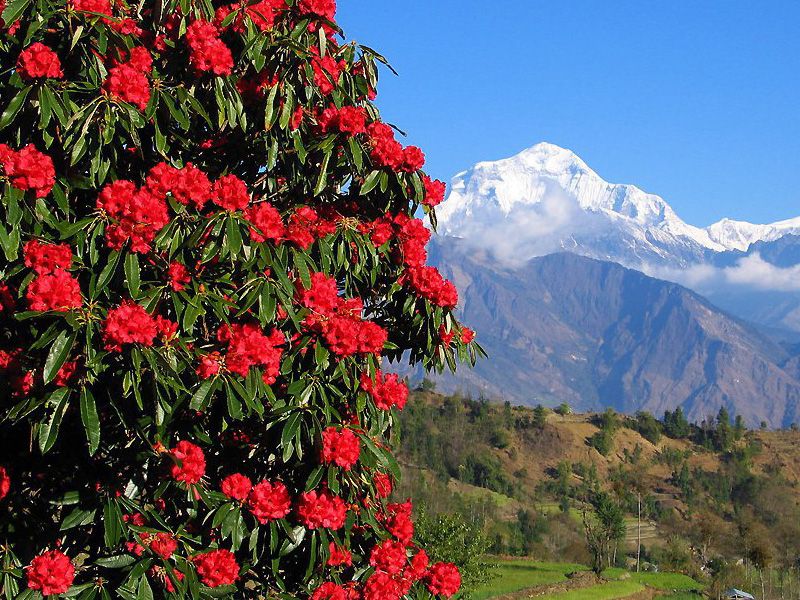
3.National Color-Crimson (Simrik) is our national color.
4.National Animal-The cow is our national animal. The cow is regarded as god in various culture.It’s products are used to meet various necessity.
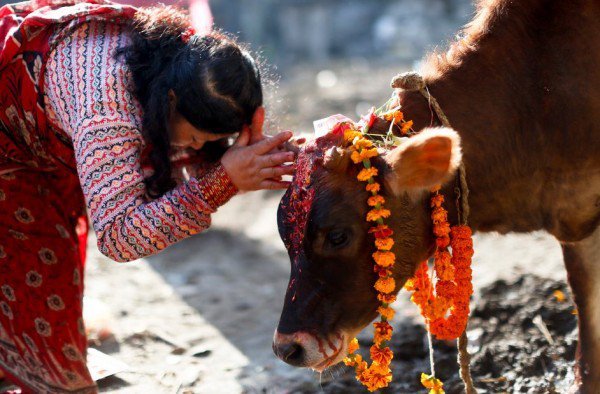
5.National Bird- The Lophophorus(Danphe) is our national bird.
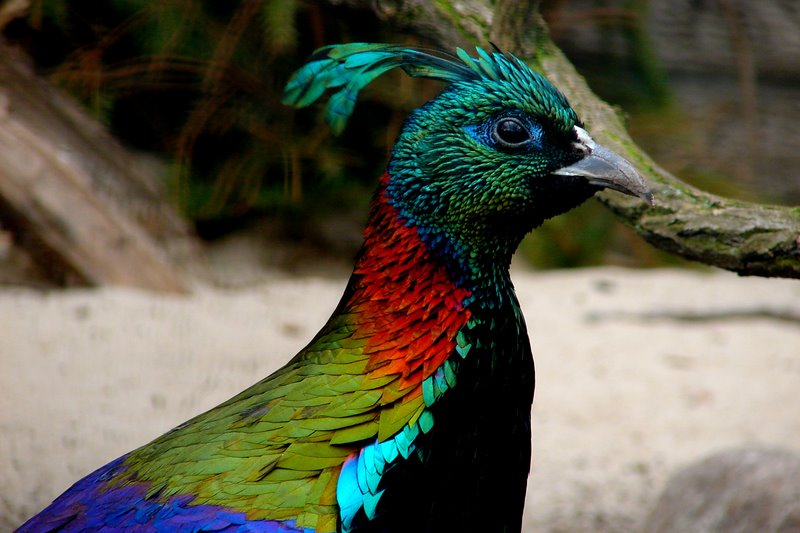
6.National Dress- Daura, suruwal, patuka and cap for men; and fariya, chawbandi cholo and majetro for women.In the celebration of national events,people decorate themselves in the national dress.
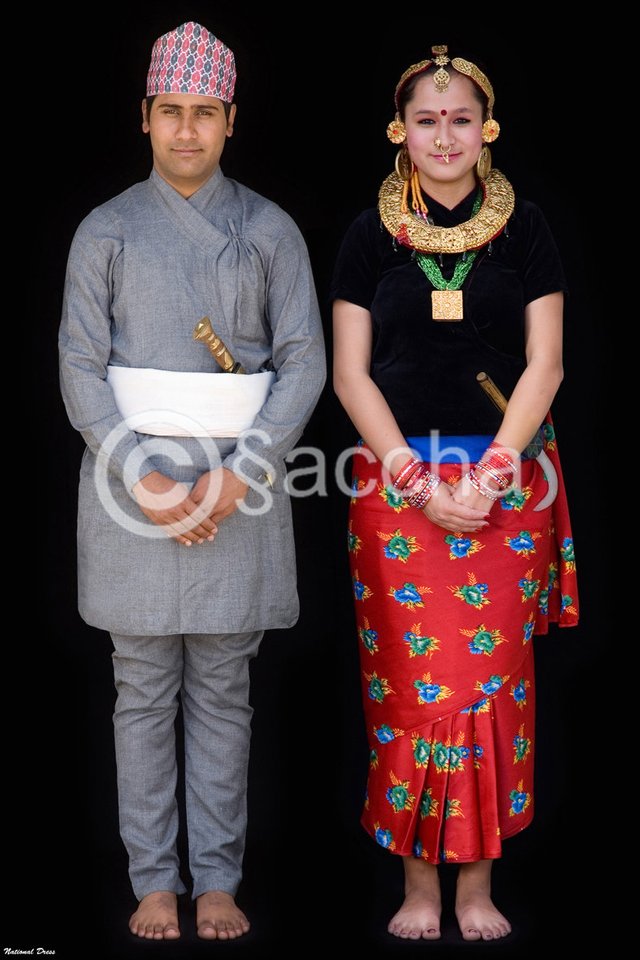
Unity in diversity Nepali dress
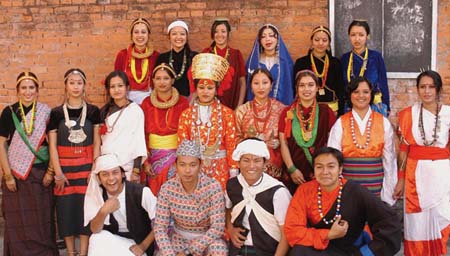
7.National Anthem-"Sayaun Thunga Phool Ka" (Nepali:"Made of Hundreds of Flowers") is the national anthem of Nepal. It was officially adopted as the anthem on August 3, 2007, amid a ceremony held at the conference hall of National Planning Commission, inside the Singha Durbar, by the speaker of the interim parliament, Mr. Subash Chandra Nemwang. The previous anthem, Rastriya Gaan, had been adopted in 1962, but it was dropped following the abolishment of the monarchy.
Murtikala(sculpture)
The art of sculpture prevailing from the ancient time to date denotes the work to make small images and big statues out of clay, stone, metal and wood. Images and statues are made by carving, modeling, and molding. The artist who makes sculptures is known as a sculpture. Like paintings, our sculptures are also shaped by religion. They are indeed, the offshoots of our religion. Excavations carried out over these years in places like Janakpur and Lumbini are reported revealing more of ancient and medieval sculptures. The sculpture of Baman Tribikram erected by the Lichchhavi King by Man Dev is considered to be the oldest sculpture of Nepal. Likewise the sculptures of Birupakchya and Yakchya are also among the oldest sculptures of Nepal.Sclupture started in the Lichchhavi period and reached to its peak in the Malla Period.
A Murti is an embodiment of the divine, the Ultimate Reality or Brahman to some Hindus. In religious context, they are found in Hindu temples or homes, where they may be treated as a beloved guest and serve as a participant of Puja rituals in Hinduism.For instance;
Stone sculptures of Lord Bishnu and other gods and goddess.
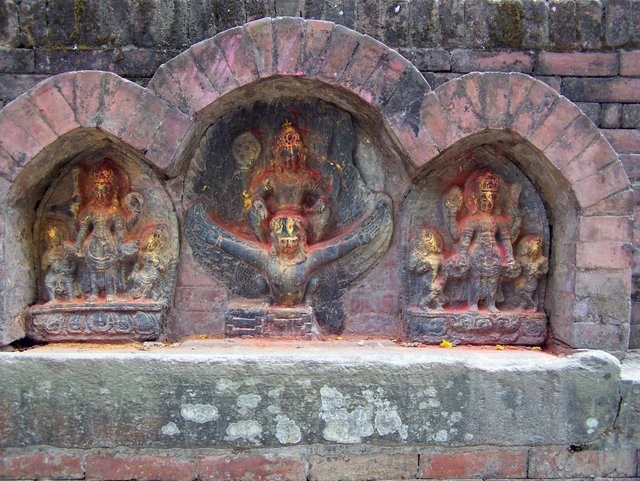
Stone image of human face bird Garud.
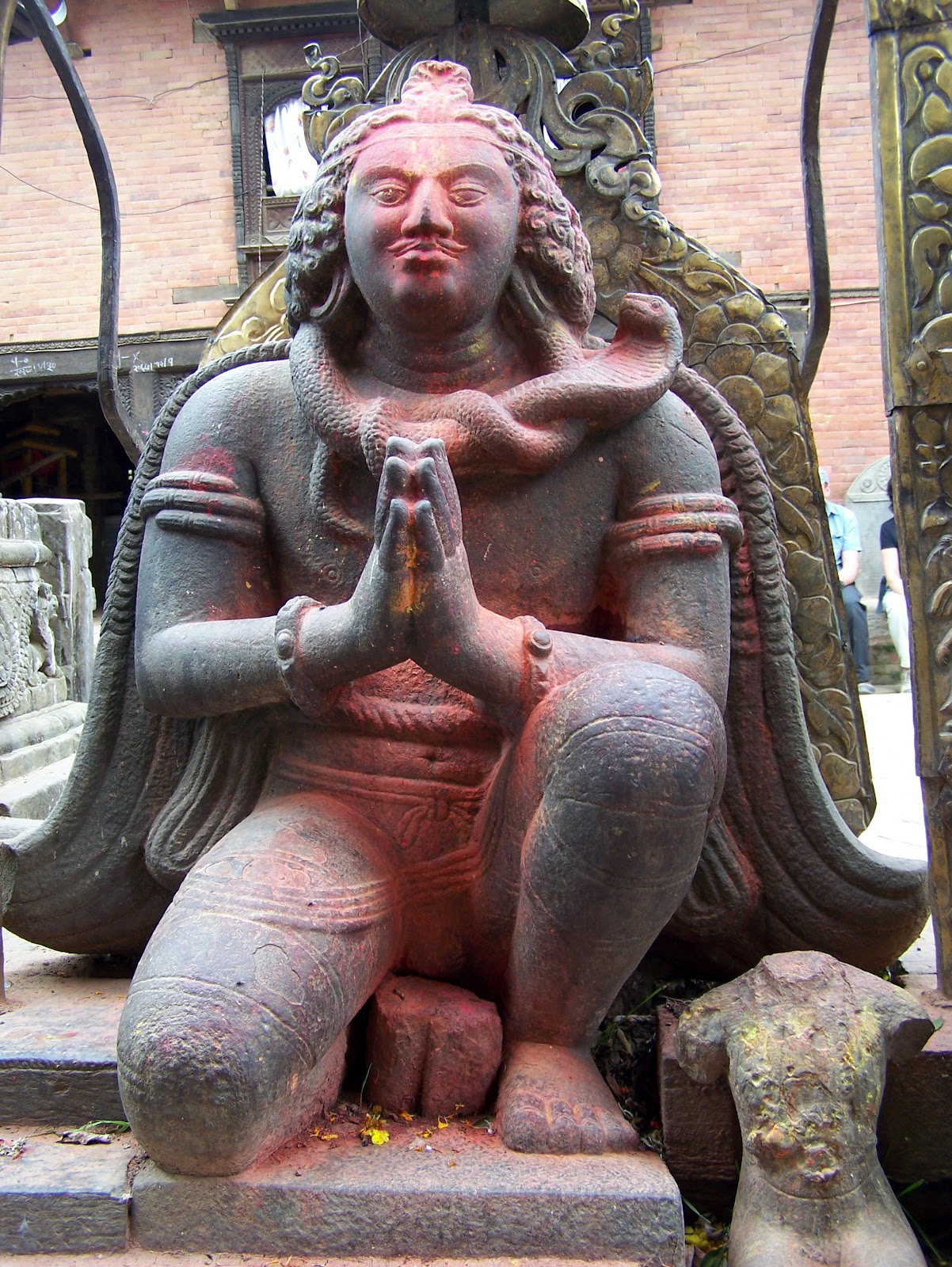
Located here is the deity of lord Vishnu, Vishnu(Narayan), lying on the Ananta sesa, in the cosmic ocean.The deity is over 1,000 years old.Lord Vishnu is about 5m(17ft) long and is lying on the 13m(43ft) long tank as if floating,with his leg crossed.
Architecture(Bastukala)
By architecture, we mean the art of building houses, palaces, temples, forts etc. The art of building dates back to the ancient age. It was explicitly religious and majestic art. Mangriha of Mandeva, Kailashkut of Amshuverma and Bhadradhiwas of Narendra Dev had the beauty of their own. Records reveal that the Lichchhavi architecture was really great but buildings of that time have not been protected to date. Palaces, temples, Buddhist monasteries and stupas, built in the medieval age have survived till today as the cultural treasures of Nepal. Nyatapola, the 5-storey temple of Bhaktapur was built in medieval age by King Bhupitindra Malla to keep the goddess Laxmi inside.
Ancient architecture is divided into three categories:
1)The Pagoda Style It means the styles of having more than one roofs with a boarder base and gradually narrowing tops. Mangriha of Mandev temple of Changu Narayan, Kailaskut Bhawan of Amshuverma, Bhadradhiwas of Narendradev of ancient times are some of the excellent examples of Nepalese Architecture.
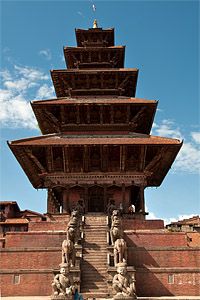
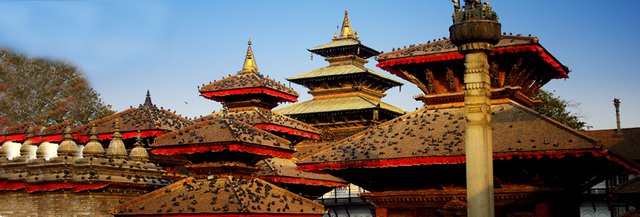
2)The Shikhar style looks like the peak of mountain. The top most part of each structure consists of pinnacle. It is divided into five or nine parts in a vertical manner. Example Krishna Mandir, Janki Mandiretc.
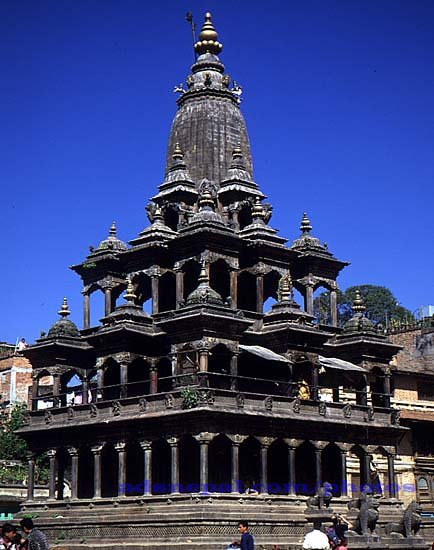
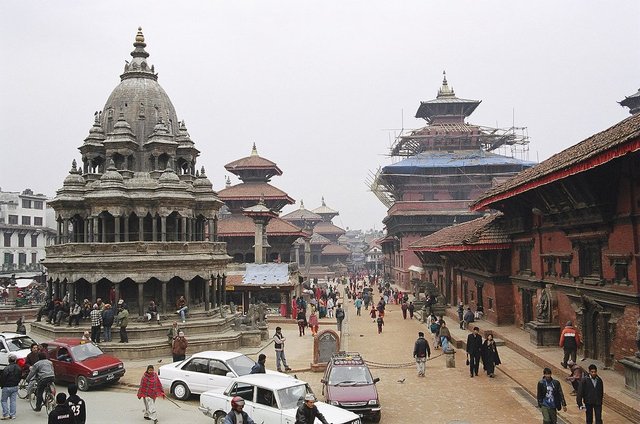
3)The Stupa style looks like hillock. It is a shrine with a broad base of its gradual upward narrowing. It does not have any division.Boudhanath,Swayambhunath etc are some of the examples of stupa style.
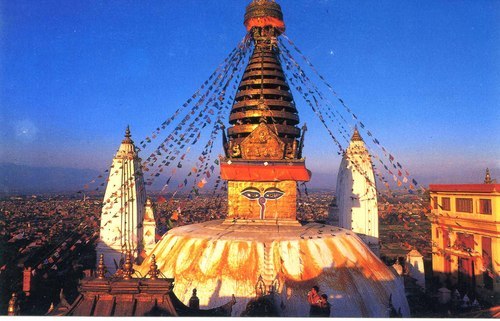

Kingship of Nepal
The King of Nepal, traditionally known as the Maharajadheraj, was Nepal's head of state and monarch from 1768 to 2008. He served as the head of the Nepalese monarchy—Shah Dynasty. The monarchy was founded in 1768 and was abolished on 28 May 2008 by the 1st Constituent Assembly. The subnational monarchies in Mustang, Bajhang, Salyan, and Jajarkot were also abolished in October.
Under one umbrella of kingship these all above varieties are bought up. “Nepal is a garden in which four castes and thirty-six sub castes blossom forth” has being said by King Prithivi Narayan Shah, who is the founder of modern Nepal. King Prithivi Narayan Shah wanted to protect the country from the claws of the British Empire, along with the expansion of Gorhka kingdom. By uniting the small kingdoms into a strong nation, he wanted to foil the evil designs of the British. King Prithivi Narayan Shah had united the whole nation together. Before, at the advent of democratic age, our king exercises limited powers under the constitution. Before he was constitutional monarch. However, the King and the Royal Family were the center of attraction. The people used to respect them and were liked by children also but due to some circumstances which is not possible now. Before King were the symbol of national unity and national integration. Thus, the age of old tradition of kingship was the elements of our identity.
King Prithivi Narayan Shah
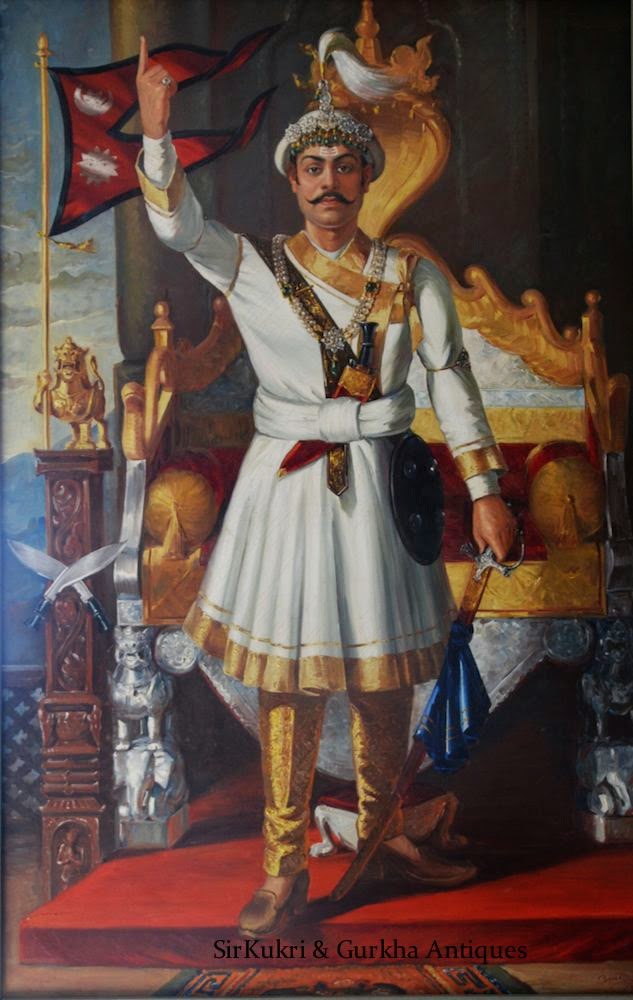-imp.jpg)
Balkrishna Sama's hypothetical painting of all nine Rana prime ministers.
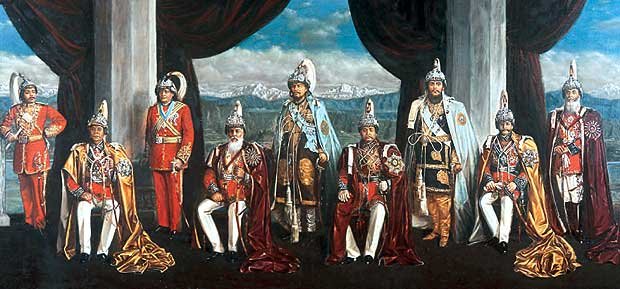
Nightmare of Nepal.
The Nepalese Royal Massacre occurred on 1 June 2001, at a house on the grounds of the Narayanhity Royal Palace, the residence of the Nepalese monarchy. Ten members of the family were killed during a party or monthly reunion dinner of the royal family in the house. The dead included King Birendra of Nepal and Queen Aishwarya.
Later, upon his father's death, Prince Dipendra became King of Nepal while in coma, and he died in the hospital three days after the massacre without recovering from this coma.
Birendra's brother Gyanendra became king after the massacre and the death of King Dipendra.
The Royal Massacre Fullstory : https://steemit.com/history/@bisesh/4km68x-the-nepalese-royal-massacre
Birth place of famous people
Our country Nepal has some of the world renowned people. During the pre-historic age, saints like Veda Vyasa, Valmiki, and Kanwa use to live there. Veda Vyasa had composed Mahabharat at Vyas Cave in Damauli. Valmiki also spent some time at Bhainsalotan in Nawalparasi and has composed Ramayan. Kanwa Rishi who bought up Shakuntala’s son Bharat and he ruled over it.
Our country also is the birthplace of Gautam Buddha. Gautam Buddha was born in Lumbini. Gautam Buddha was the founder of Buddhism and preacher of peace and non-violence in the world. Tenzing was also one person who climb the first Mount Everest. Tenzing was born in Solukhumbhu district.
Along with Tenzing Edmund Hillary of New Zealand also climbed it. King Tsrong Sang Gampo of Tibet who spread Buddhism and Nepali culture in Tibet and China.
Similarly, Arniko, was the first Nepali artist and architect, who was sent to Tibet and China to built several Nepali structures there. Thus, there are number of people who are gained world-wide popularity in different areas, were born in Nepal. Nepal and all the Nepalese are proud of them.
Hope you guyz liked it :)
Be sure to visit Nepal once in a your lifetime.
There are still so much share.Stay tune to know more about nepal and my photography.
Take care.
Thanks for sharing... Love it.
Thankyou :)
Great work and it was great to know a lot about this beautiful country. Keep it up sir.
Well Thankyou
Stay tune for more facts about nepal..
Thanks for sharing... Love it.
Thankyou :)
Congratulations @sanjogshrestha! You have completed some achievement on Steemit and have been rewarded with new badge(s) :
Click on any badge to view your own Board of Honor on SteemitBoard.
For more information about SteemitBoard, click here
If you no longer want to receive notifications, reply to this comment with the word
STOPAwesome Keep it up